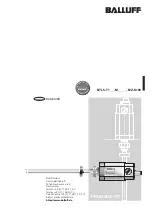
Rev1.0 | 43/
50
CMT2300A
Table 20. Low-power receiver mode
The traditional low-power transceiver solution and the 13 extended low-power solutions based on it are listed in the below table.
Table 19. Low-power Rx mode
No.
Rx Extended Methods
Rx Extended Condition
0
No Rx extension is supported. Exit Rx state as soon as
T1 timed out.
None
1
Once meet the Rx extended condition during T1, leave
T1 and pass the control authority to MCU.
RSSI_VLD is valid.
2
PREAM_OK is valid.
3
RSSI_VLD and PREAM_OK are valid simultaneously.
4
Once detect RSSI_VLD = 1 during T1, leave T1 and
stays in Rx state, exit Rx state until RSSI_VLD = 0.
RSSI_VLD is valid.
5
Once meet the Rx extended condition during T1, switch
to T2. Exit Rx as soon as T2 timed out.
RSSI_VLD is valid
6
PREAM_OK is valid
7
RSSI_VLDandPREAM_OK are valid simultaneously.
8
Any one of PREAM_OK or SYNC_OK is valid.
9
Any one of PREAM_OK or NODE_OK is valid.
10
Any one of PREAM_OK or SYNC_OK or NODE_OK is
valid.
11
Once meet the Rx extended condition during T1, switch
to T2. Leave T2 and pass the control authority to MCU
as soon as SYNC is detected, otherwise exit Rx when
T2 timed out.
RSSI_VLD is valid.
12
PREAM_OK is valid.
13
RSSI_VLD and PREAM_OK are valid simultaneously.
The T1 and T2 mentioned in the table refer to the RX T1 and the RX T2 time interval that can be set via the registers or RFPDK.
The source of RSSI_VLD can be the comparison result of the RSSI or the detection result of the phase jump detector (PJD). For more
details, please refer to “AN146-CMT2300AW Low Power Mode Usage Guideline”.
7.3
Receiver “Power VS Performance” Configuration
CMT2300A provides a set of registers to select the power consumption and sensitivity performance of the RF frontend circuit. The
below table shows how they are configured:
Current level
RF Performance
LMT_VTR<1:0>
MIXER_BIAS<1:0>
LNA_MODE<1:0>
LNA_BIAS<1:0>
Low
Low
2
2
1
1
Medium
Medium
2
2
1
2
High
High
1
2
3
2








































